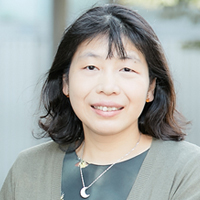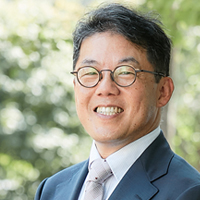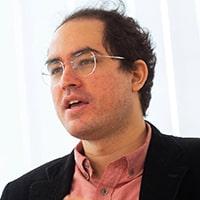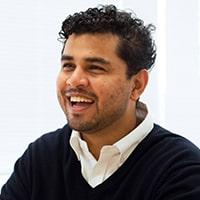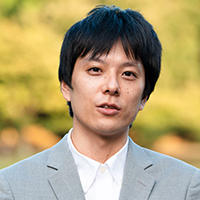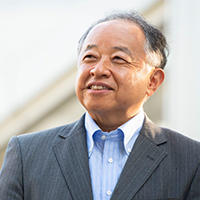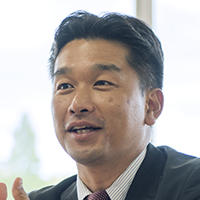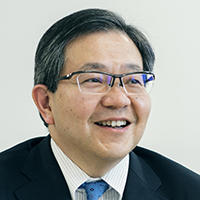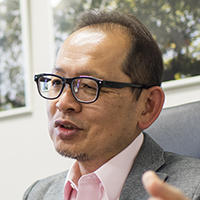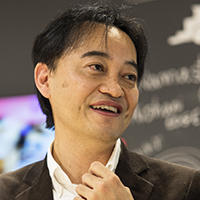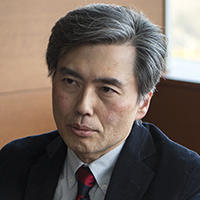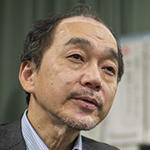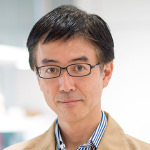SDM Voice | Prof. Tetsuro OGI
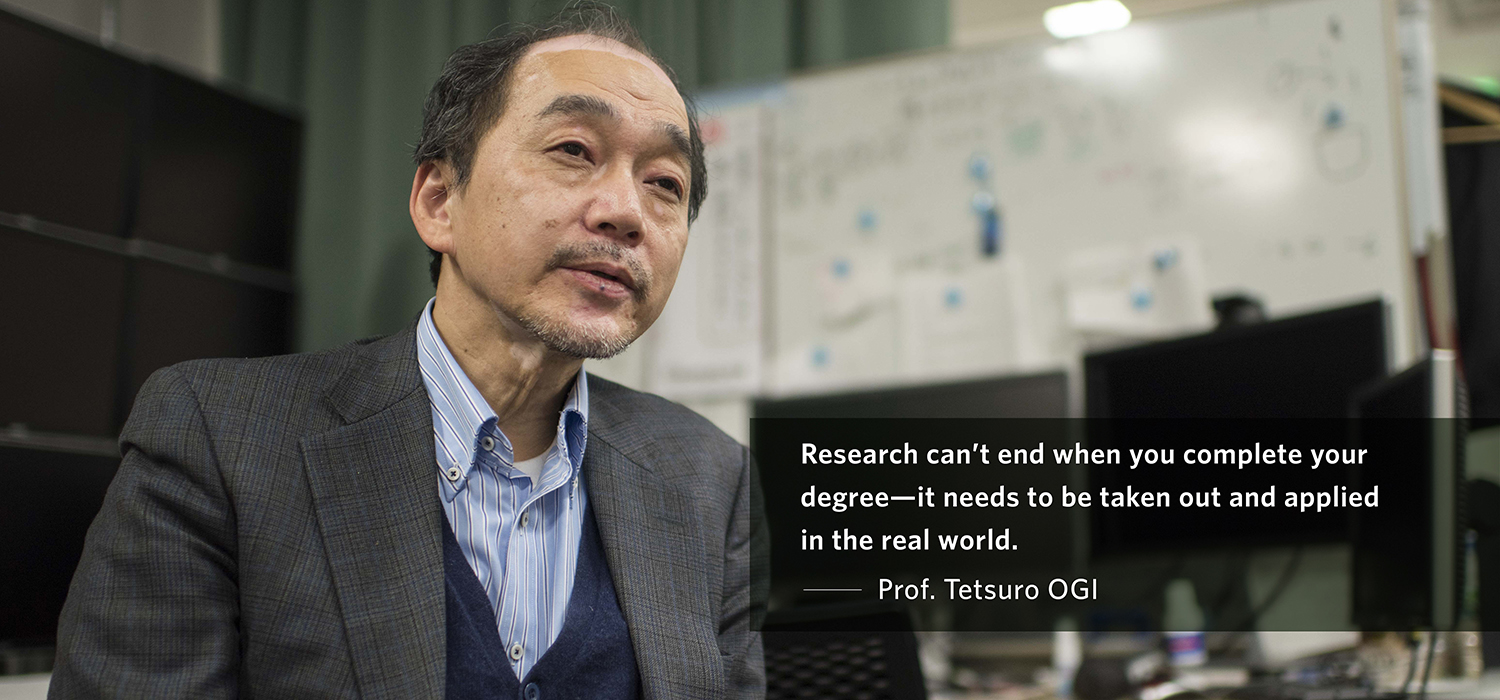
Professor Tetsuro Ogi leads media systems research at SDM. He sits down for this interview to talk about how both faculty and staff contribute to his interdisciplinary research as well as how SDM’s integrated approach to education moves beyond the school and into the real world.
Profile
Tetsuro Ogi
Professor, Graduate School of System Design and Management (SDM), Keio University
Former associate professor at the Graduate School of Systems and Information Engineering, University of Tsukuba. Research specialities: Virtual reality, human interface, visual simulation, and tele-immersive communication. He is the author numerous publications including Introduction to Cyber-Space (Nippon Jitsugyo Publishing) and Thoughts on Simulation (University of Tokyo Press).
Collaborating with Industry on Research
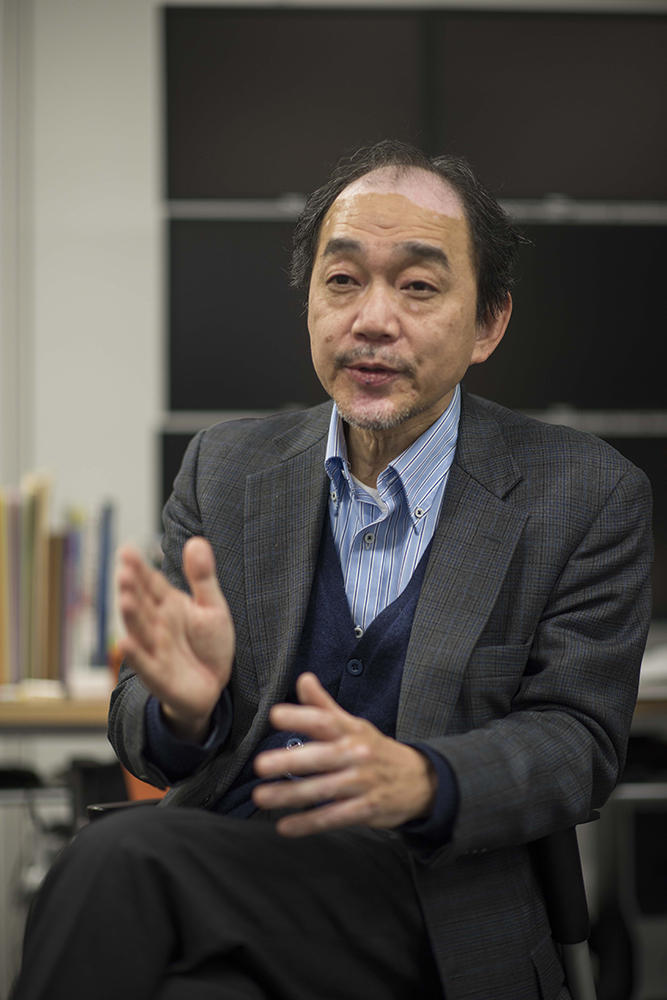 My lab is called the Media Systems Lab. Media here refers to what can be expressed using text and video, such as computer-based video technology, 3D computer graphics, digital signage, and devices like smartphones. Our research focuses on tele-immersion, which networks highly realistic video communications technology. My tele-immersion research focuses on how we can allow users to feel immersed in remote places, as if they were really there, and enable people to communicate remotely with one another while sharing that sense of immersion. One project we're working on is dome-based image projection that makes effective use of digital planetarium environments. An image projected onto a dome feels three-dimensional and seems to move through space, all without having to wear 3D glasses. For the past couple of years, we have used this effect to see how far we can recreate a three-dimensional stereoscopic world.
My lab is called the Media Systems Lab. Media here refers to what can be expressed using text and video, such as computer-based video technology, 3D computer graphics, digital signage, and devices like smartphones. Our research focuses on tele-immersion, which networks highly realistic video communications technology. My tele-immersion research focuses on how we can allow users to feel immersed in remote places, as if they were really there, and enable people to communicate remotely with one another while sharing that sense of immersion. One project we're working on is dome-based image projection that makes effective use of digital planetarium environments. An image projected onto a dome feels three-dimensional and seems to move through space, all without having to wear 3D glasses. For the past couple of years, we have used this effect to see how far we can recreate a three-dimensional stereoscopic world.
We are also working with the Tanita Corporation on a health project backed by the National Institute of Information and Communications Technology (NICT). We have regular people wear fitness trackers and log their daily workouts, recording how many calories they burn each hour. We are then able to analyze the lifelogs of hundreds of thousands of people and apply that information to health management. The Tanita Corporation, who helped me organize the Multi-Generation Health Promotion Project in Nagaoka, Niigata, had already been offering a health program service at the time, so we decided to make a joint proposal to create something together with the NICT's budget for big data.
Beyond the Confines of the Humanities and Sciences
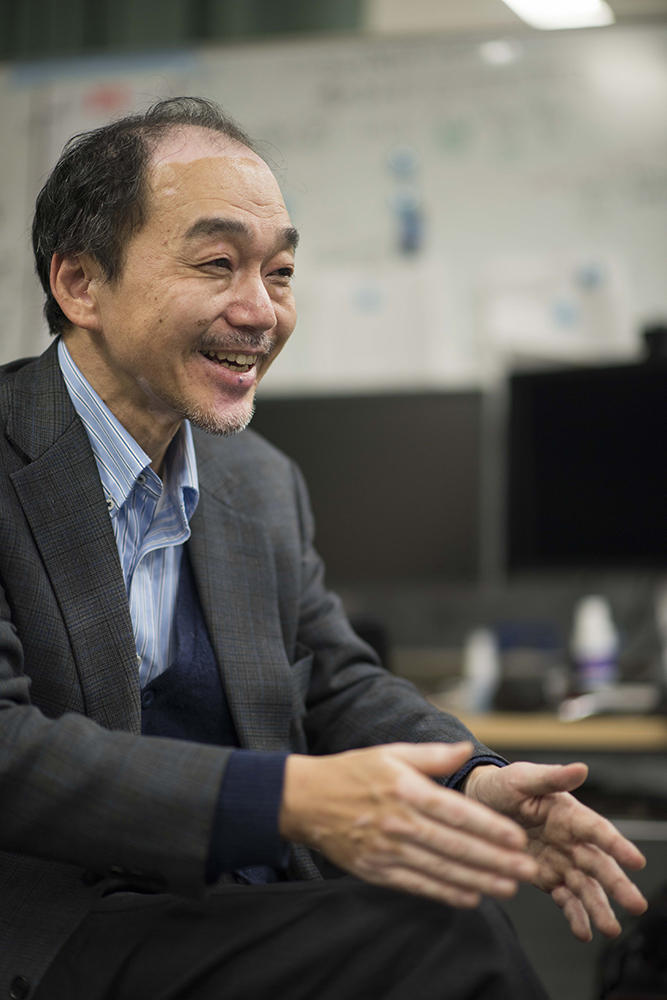 I am responsible for information networks and databases, simulation techniques, interface theory, and statistics. While statistics is often pegged as a field within mathematics, we no longer live in a time when the humanities can isolate themselves from math. A minimal understanding of data handling is required to think about systems based on big data. SDM aims to capture the needs of society and the design systems that can meet those needs. Even students in the humanities need to think about how their ideas can benefit society. For example, they need to know that statistics are crucial for survey analysis and decision-making.
I am responsible for information networks and databases, simulation techniques, interface theory, and statistics. While statistics is often pegged as a field within mathematics, we no longer live in a time when the humanities can isolate themselves from math. A minimal understanding of data handling is required to think about systems based on big data. SDM aims to capture the needs of society and the design systems that can meet those needs. Even students in the humanities need to think about how their ideas can benefit society. For example, they need to know that statistics are crucial for survey analysis and decision-making.
Outside of class, I'm also responsible for international partnerships. SDM has held courses in English since its inception and has proactively built exchange student programs with partners abroad. Currently credits earned at a partner institution are recognized by SDM, and SDM tuition covers courses at six partner institutions. Additionally, we have mutual research guidance agreements with ten international partners.
Training Professionals with Multiple Perspectives
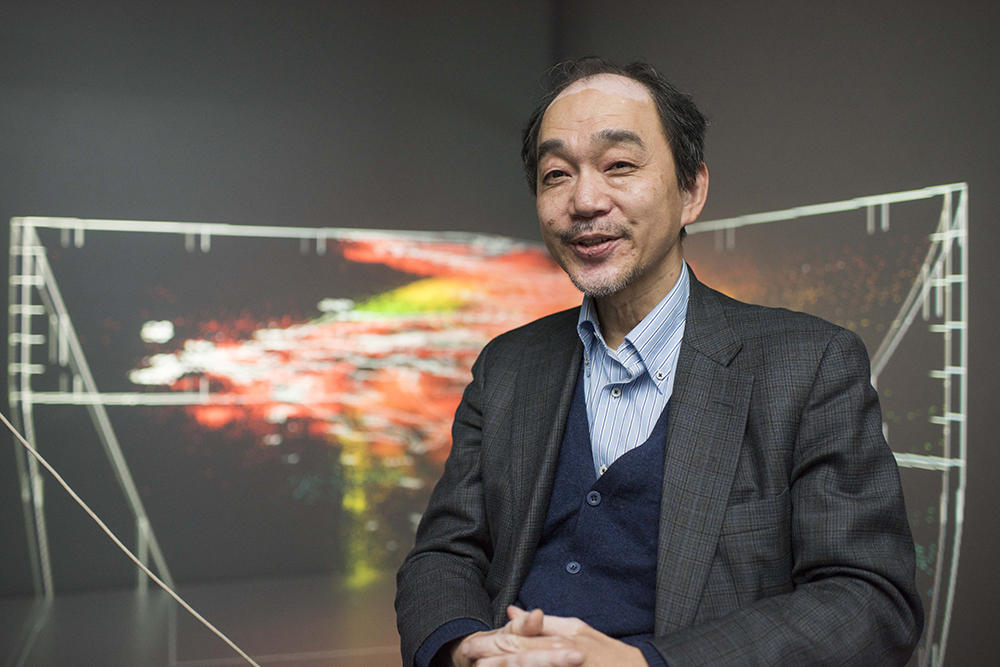
One defining characteristic of SDM is a decided disregard for boundaries between the humanities and sciences. Generally speaking, university professors know not to infringe on other faculty members' areas of expertise. But within the culture at SDM, twelve full-time academic faculty work together to fill in the knowledge gaps between each other's research fields. That is the main difference between SDM and other universities. There was no definitive concept of what SDM should be at the time the graduate school was established. In any event, we wanted to be in constant conversation with society and avoid confining ourselves to armchair academism. We began SDM with a mutual understanding that we needed more individuals who can see the bigger picture, rather than those who simply have knowledge of a single area of expertise. Whenever faculty get together, the conversation gets interesting with the number of varied opinions. In fact, I first gained an interest in political issues after coming here. My own research does not end with publication. I always try to test the results of my research in the real world, and joint research with private corporations is one way that allows me to do so.
I think people become more versatile at SDM, gaining a variety of different viewpoints within the environment that SDM provides. I expect to see an increase in students who are passionate about breaking down current conventions and building new social systems, who use their heads, and who aren't afraid to get their hands dirty to effect change in society. I sincerely hope that our alumni will take their research findings at SDM into the real world by creating new groups in society.

